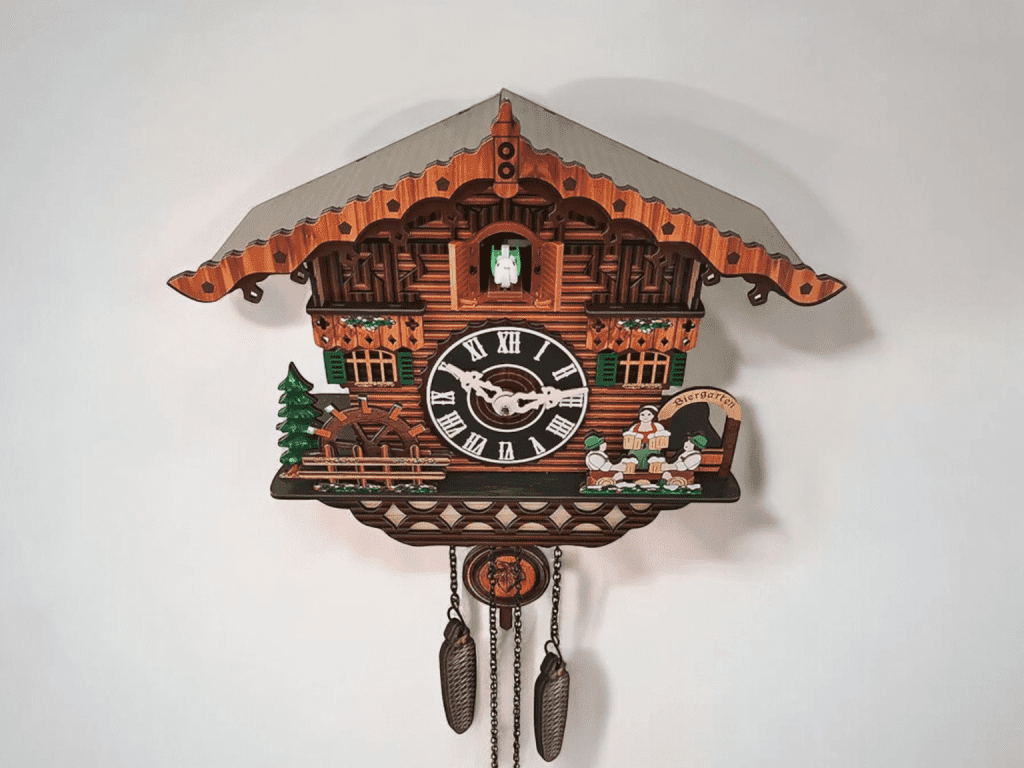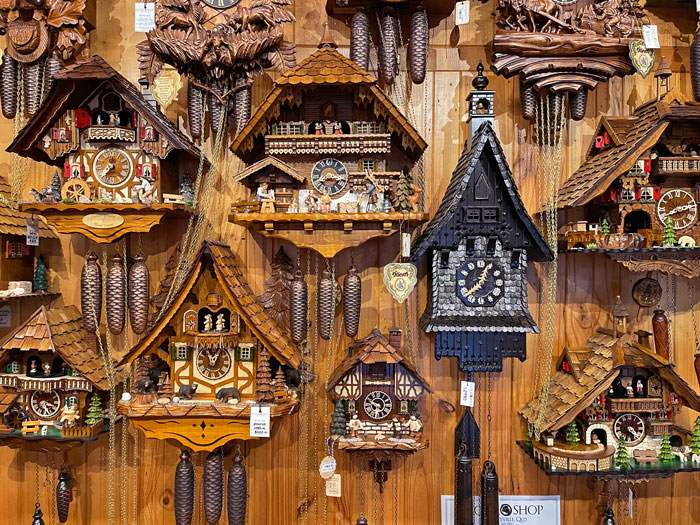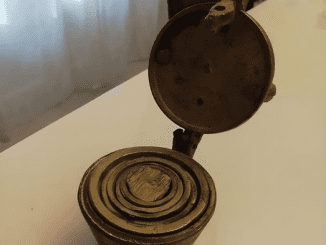Thrift shopping is like embarking on a treasure hunt, where you never quite know what gems you’ll uncover. Recently, you may have come across some dense, metal items that piqued your curiosity. At first glance, they might seem like simple, weighty objects. But upon closer inspection, you might find that these items have a fascinating connection to traditional clockmaking—specifically, mechanical cuckoo clocks.

Unveiling the Mystery: Cuckoo Clock Weights
These dense metal items are most likely weights used to power mechanical cuckoo clocks. The timeless charm of cuckoo clocks has captivated people for centuries, and the intricate mechanisms behind them rely heavily on these weights. While their design may seem simple, their purpose is vital for the clock’s functionality.
How Cuckoo Clock Weights Work
Cuckoo clocks are powered by gravity, and the weights you discovered play a crucial role in driving the entire system. Typically, a cuckoo clock has two to three weights hanging from chains. Each weight serves a different function in keeping the clock’s gears turning and the cuckoo chirping.
One Weight Powers the Clock Mechanism
The first of these weights is dedicated to powering the clock mechanism itself. As the weight descends, it activates a series of gears that keep the clock ticking. The descent is controlled by the interaction between the chain and the gears, ensuring a steady flow of energy. This is what keeps the time accurate.
The Second Weight Activates the Cuckoo
The second weight is responsible for powering the cuckoo feature. As the clock strikes the hour, this weight triggers the movement of the cuckoo bird, which pops out of the small door at the top of the clock, accompanied by the familiar “cuckoo” sound. The combination of precise timing and charming theatrics has made the cuckoo clock an enduring household item.
The Function of the Chains
The weights are connected to the clock via chains, which allow them to move up and down as they perform their respective functions. Over time, the weights naturally descend as the gears move. To keep the clock running, you must periodically wind it by pulling the chains and raising the weights back to their starting positions.

Winding the Clock
Winding the clock is a straightforward process. By gently pulling on the other end of the chain, the weight is lifted back up, resetting the mechanism. Once the weights are in position, the clock can continue to function for another day or two before needing to be rewound again.
The Materials of the Weights
Cuckoo clock weights are typically made from dense materials like cast iron or lead. This ensures they have enough weight to power the clock over extended periods. They are often designed to resemble pinecones or other decorative motifs, adding to the clock’s aesthetic appeal. While their exterior is crafted for beauty, their function is purely mechanical.
Decorative and Functional
It’s not just about function, though. The weights, with their decorative designs, are integral to the visual appeal of cuckoo clocks. The intricate patterns on these weights complement the hand-carved wooden details that cuckoo clocks are famous for. So, if you’ve stumbled upon a set of pinecone-shaped weights, it’s not just a practical find—it’s a piece of history with artistic craftsmanship.
History of the Cuckoo Clock
Cuckoo clocks have a rich history, originating in the Black Forest region of Germany in the 17th century. These clocks are famous for their precision craftsmanship and detailed carvings, often featuring woodland scenes, animals, and of course, the iconic cuckoo bird. The clocks’ appeal lies in their combination of aesthetic beauty and mechanical ingenuity, making them both functional and decorative.
The use of weights to power clocks is an ingenious design that dates back hundreds of years, long before the advent of electric or battery-powered clocks. This mechanical engineering marvel relies solely on gravity to function, a testament to the ingenuity of early clockmakers.

Why Are These Weights So Important?
Without the weights, a mechanical cuckoo clock would not work. They provide the necessary force to keep the gears in motion, and in turn, ensure the time is kept accurately. The smooth, consistent drop of the weight over time ensures that the clock remains reliable and functional.
Caring for Cuckoo Clock Weights
If you’re lucky enough to have found these weights at a thrift shop, it’s important to care for them properly, especially if you own or plan to acquire a cuckoo clock. Keep the weights clean and free of dust, as any debris can affect their performance. Additionally, make sure the chains they are connected to are in good condition to avoid any disruptions in the clock’s operation.
Are They Valuable?
Cuckoo clock weights can have value, especially if they are part of a vintage or antique clock. Collectors of cuckoo clocks often seek original parts to restore their clocks to working order. If the weights you found are part of an old or rare clock, they could be worth something to a collector. Even if they aren’t, they make for a beautiful and functional piece of history.
Conclusion: A Piece of Time-Honored Craftsmanship
In conclusion, the dense metal items you discovered at a thrift shop are likely weights from a mechanical cuckoo clock—an essential component that powers the timeless charm of these intricate timepieces. From their decorative design to their functional importance, these weights represent a key part of horological history. Whether you’re planning to use them for restoration or simply as a nostalgic keepsake, you’ve found a fascinating relic of a bygone era that still has relevance today.
Finding these weights can bring a piece of history into your home, and now you know the important role they play in keeping the iconic cuckoo clock running smoothly!


